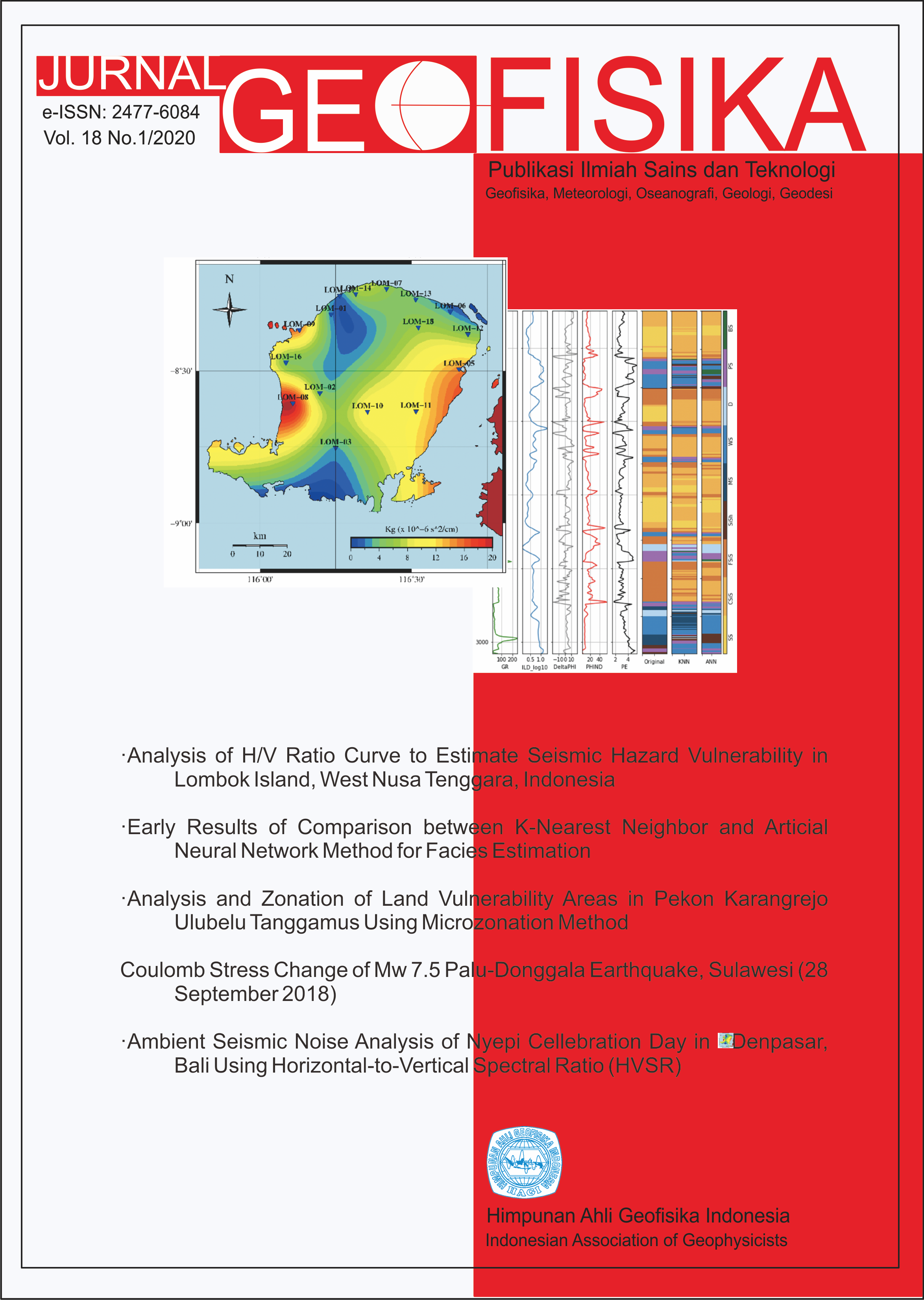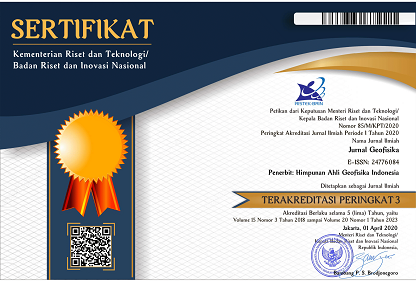Coulomb Stress Change of Mw 7.5 Palu-Donggala Earthquake, Sulawesi (28 September 2018)
Keywords
Gempabumi, Perubahan coulomb stresssAbstract
The Mw 7.5 Palu earthquake that occurred in Palu-Central Sulawesi, Indonesia, on September 28, 2018, accompanied by the tsunami and liquefaction caused casualties and building damage in the city of Palu and its surroundings. One month later, a series of earthquakes swarm occurred in Mamasa, West Sulawesi. In this study, coulomb stress were calculated using a half-space elastic model in a square plane which is assumed to be homogeneous isotropy to analyze whether there is a relationship between earthquakes that occur in Palu and earthquakes swam in the coulomb stress field changes. The results show that the area that experienced a stress reduction predominantly towards the north and south of the mainshock hypocenter, while the aftershocks were at an increase in coulomb stress changes, so that the Mamasa earthquakes swarm probably have been triggered by the Palu earthquake.
References
Socquet, A., Hollingsworth, J., Pathier, E., Bouchon, M. 2019. Evidence of supershear during the 2018 magnitude 7.5 Palu earthquake from space geodesy, Nat. Geosci, 12:192–199. https://doi.org/10.1038/s41561-018-0296-0.
Harris, R.A. 1998. Introduction to special section: Stress triggers, stress shadows, and implications for seismic hazard. J. Geophys. Res., 1998, 103 (B10): 24347-24358.
Irsyam, M., Widiyantoro, S., Natawidjaya, D.H., Meilano, I., Rudyanto, A., Hidayati, S., Triyoso, W., Hanifa, N.R., Djarwadi, D., Faizal, L., Sunarjito. 2017. Peta sumber dan bahaya gempa Indonesia tahun 2017. Pusat Penelitian dan Pengembangan Perumahan dan Permukiman, Kementerian Pekerjaan Umum dan Perumahan Rakyat.
King, G., Stein, R., dan Lin, J. 1994. Static stress changes and the triggering of earthquake, Bulletin of the Seismological Society of America, v. 84, p. 935-953.
Stein, R.S., Lisowski, M. 1983. The 1979 Homestead Valley earthquake sequence, California: control of aftershocks and postseismic deformation. J. Geophys. Res., 1983, 88 (B8): 6477-6490.
Supendi, P., Nugraha, A.D., Widiyantoro, S., Abdullah, C.I., Puspito, N.T., Palgunadi, K.H., Daryono, D., Wiyono, S.H 2019. Hypocenter relocation of the aftershocks of the Mw 7.5 Palu earthquake (September 28, 2018) and swarm earthquakes of Mamasa, Sulawesi, Indonesia, using the BMKG network data. Geosci. Lett. 6, 18, https://doi.org/10.1186/s40562-019-0148-9
Wells, D.L., dan Coppersmith, K.J. 1994. New empirical relationships among magnitudo, rupture length, rupture width, rupture area, and surface displacement, Bulletin of the Seismological Society of America, v. 84, p. 974-1002.

This work is licensed under a Creative Commons Attribution 4.0 International License.
The copyright of all articles belongs to the authors. All other copyrights is held by the Journal











